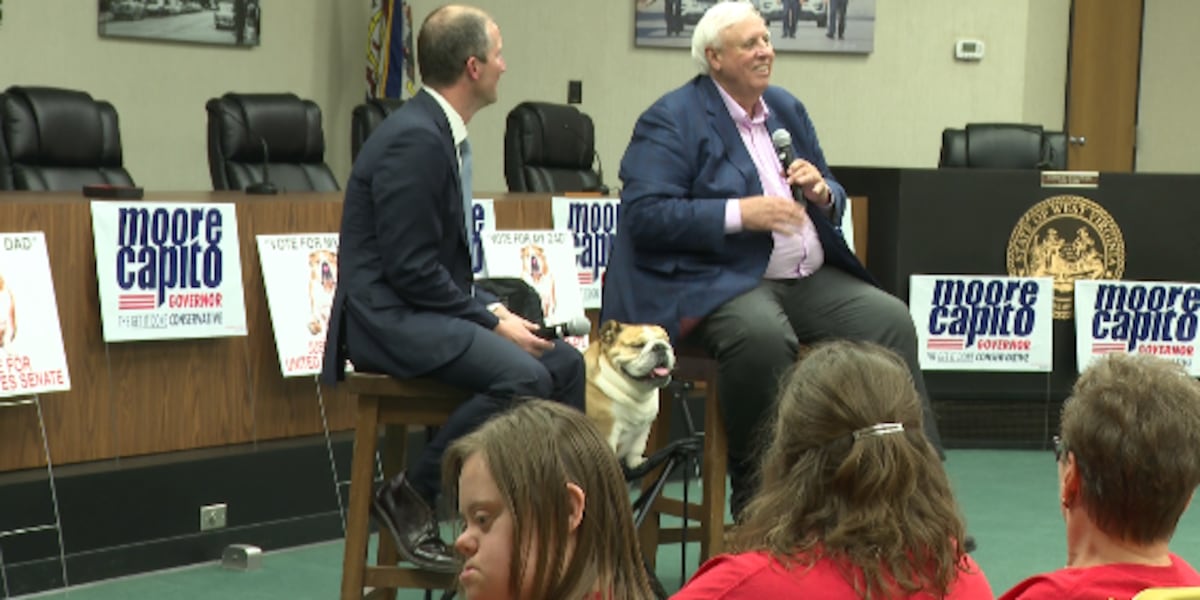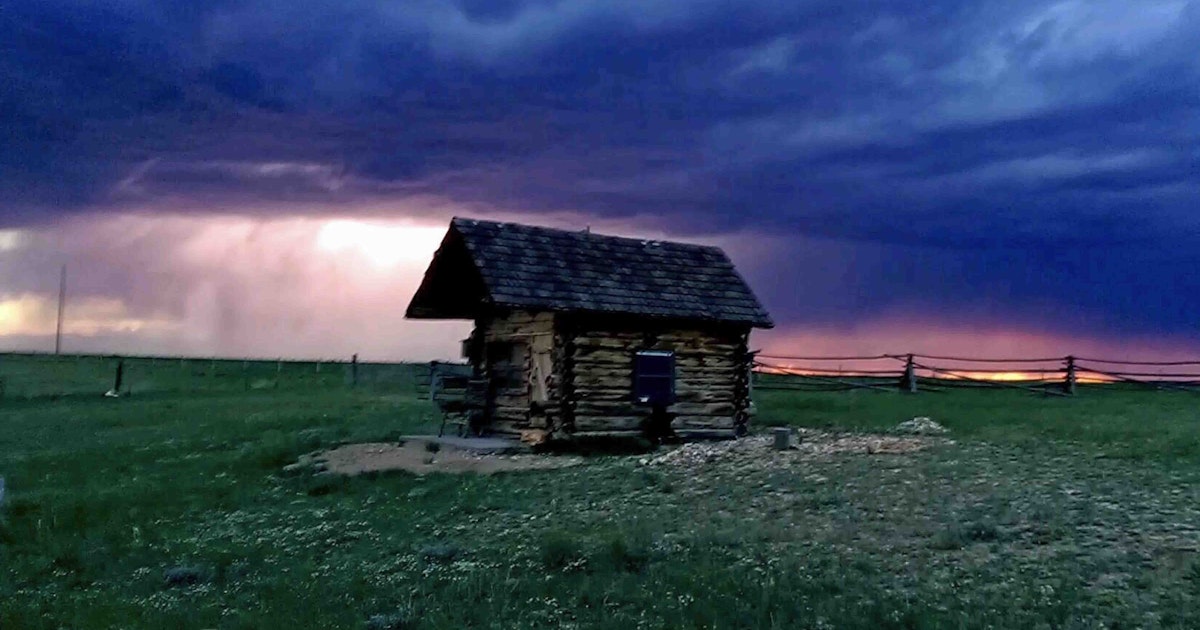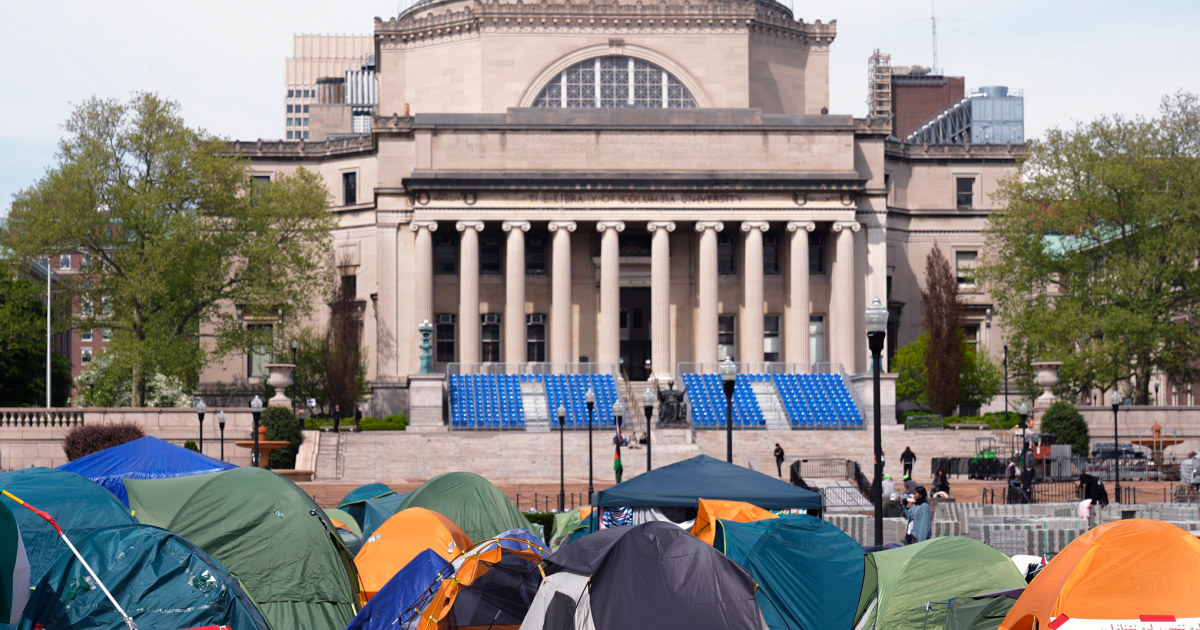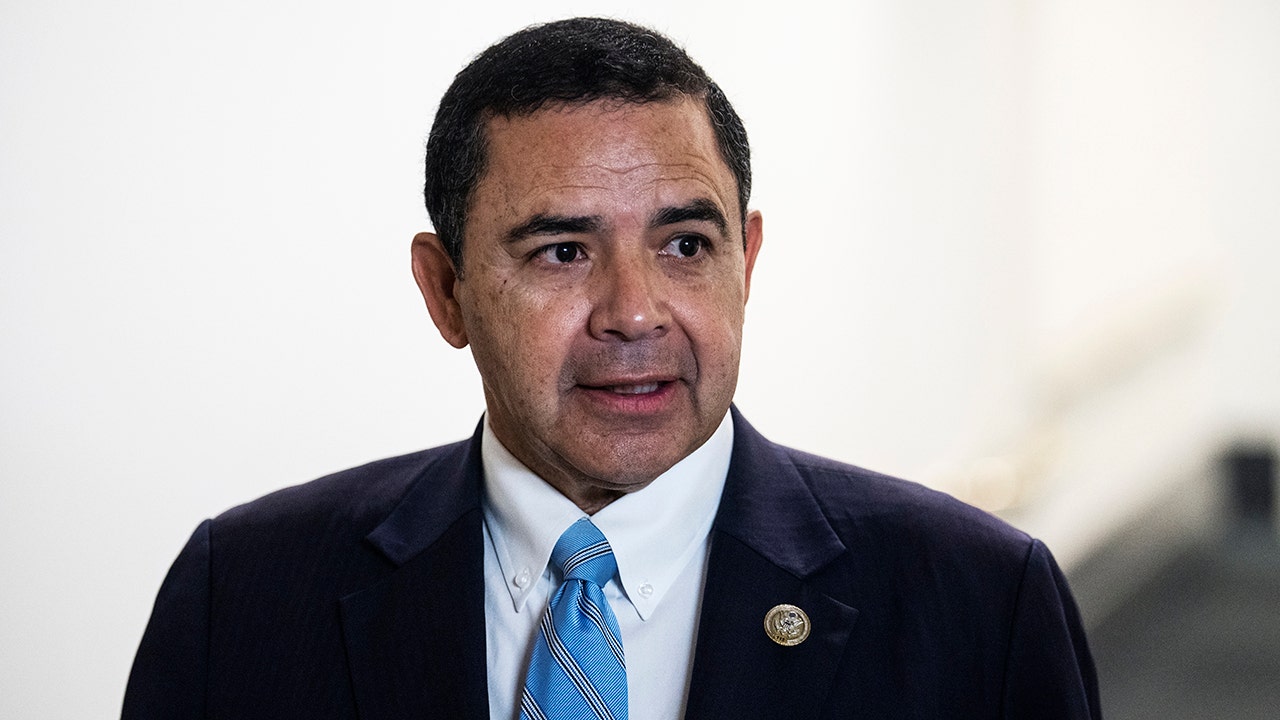Education
Biden Looks for New Ways to Energize Black Voters

During a recent town hall with the Congressional Black Caucus, Vice President Kamala Harris offered a gut check to the 200 people who had gathered to take stock of the state of civil rights in America.
“We are looking at a full-on attack on our hard-fought, hard-won freedoms,” Ms. Harris told the crowd, which erupted in applause as she spoke. “So much is at stake,” she said of the 2024 presidential election, “including our very democracy.”
In 2020, President Biden promised Black voters he would deliver a sweeping “racial equity” agenda that included a landmark federal voting rights bill, student loan relief, criminal justice reform and more. Three years later, with much of that agenda thwarted by Congress or the courts, the White House is looking for new ways to re-energize a crucial constituency that helped propel Mr. Biden to the presidency.
That means describing the stakes of the election in stark terms, as Ms. Harris did over the summer in Boston, arguing that the Republican Party is trying to reverse generations of racial progress in America. But Mr. Biden is also asking voters to judge him on a series of achievements that benefit Black Americans — but that are hardly the marquee promises from the early days of his administration.
In recent weeks, the Biden administration has gone out of its way to highlight its economic accomplishments, which include the lowest Black unemployment rate on record and the fastest creation rate of Black-owned small businesses in over 25 years. It has pointed to social policy efforts, such as increased enrollment in Obamacare and closing the digital divide, as examples of real impacts on the Black community.
In an opinion essay published on Sunday in The Washington Post, marking the 60th anniversary of the March on Washington, Mr. Biden said his stewardship of the economy — a top concern among Black voters — was helping to fulfill the nation’s promise of equality.
The president wrote that his administration was “advancing equity in everything we do making unprecedented investments in all of America, including for Black Americans.”
Administration officials acknowledge that some of those advances may not immediately resonate with a population that sees its constitutional rights under assault. While polls show continued strong support for Mr. Biden among Black voters, there are growing concerns about an enthusiasm gap among the most loyal constituencies in the Democratic Party.
Neera Tanden, Mr. Biden’s domestic policy adviser, said the president was focused on dismantling inequities that had been embedded for decades.
“I think we’ll have a transformative change,” Ms. Tanden said, pointing to executive orders Mr. Biden signed in his first days in office, which directed federal agencies to consider racial equity when it comes to the distribution of money and benefits.
But, she added, “it won’t be something millions of people feel in a minute.”
For Black Americans like Maeia Corbett, the promises of future benefits ring hollow.
“Looking at these promises that this administration has made, it’s like a whirlwind,” said Ms. Corbett, 27. “What can I grasp onto when all of these things are being taken from me?”
Ms. Corbett, who graduated from college just months before the coronavirus pandemic brought student loan payments to a pause, had been banking on Mr. Biden’s promise to cancel up to $20,000 in student loan debt for millions of borrowers.
When the Supreme Court ruled in June that Mr. Biden’s plan was unconstitutional, Ms. Corbett, like many Black Americans, felt a familiar sting of disappointment. The fact that the decision came just 24 hours after the court struck down affirmative action in college admissions, a longstanding mechanism for economic and social mobility for Black people, was almost disorienting.
“It’s like you get to the steps of equity and the steps are torn down,” she said.
Ms. Corbett’s sentiments are a warning sign for the president, who has tied the success of his presidency to racial progress. Mr. Biden has said he would use the power of his office to address inequity in housing, criminal justice, voting rights, health care, education and economic mobility.
“I’m not promising we can end it tomorrow,” Mr. Biden said in January 2021. “But I promise you: We’re going to continue to make progress to eliminate systemic racism, and every branch of the White House and the federal government is going to be part of that effort.”
Melanie L. Campbell, the president of the nonpartisan National Coalition on Black Civic Participation, said Black women — widely credited with securing Mr. Biden’s win — could see tangible progress in historic appointments of Black women to cabinet positions and the federal judiciary, including Ketanji Brown Jackson to the Supreme Court.
But the courts, conservative activists and a bitterly divided Congress have curtailed a lot of Mr. Biden’s agenda. Lawsuits have held up the administration’s efforts to forgive the debts of Black and other minority farmers after years of discrimination. Congress has blocked two signature pieces of legislation Mr. Biden championed, the George Floyd Justice in Policing Act and the John R. Lewis Voting Rights Advancement Act. And conservative groups have vowed to pursue legislation challenging Mr. Biden’s plans to prioritize race-conscious policies throughout the federal government.
Now, with aides describing him as frustrated over the setbacks, Mr. Biden is taking pains to cast the election as a choice between his agenda and the extremism of “MAGA Republicans,” or those loyal to former President Donald J. Trump.
“My dad used to say: ‘Joey, don’t compare me to the Almighty. Compare me to the alternative,’” Mr. Biden says in a common refrain.
Cedric Richmond, a co-chairman of the Biden campaign, said the campaign would emphasize that Mr. Biden should not be blamed for the Supreme Court decisions. “It’s the court that just rolled back equity, and we’re going to point to it,” he said.
A recent Axios survey of more than 780 college students and recent graduates found that 47 percent of voters blamed the Supreme Court for student loans not being forgiven, 38 percent blamed Republicans and 10 percent blamed Mr. Biden.
Still, polls show that Black voters under 30 have far less enthusiasm for Mr. Biden than their elders do.
Mary-Pat Hector, the chief executive of Rise, a student advocacy organization that has pushed for student debt relief and college affordability, said the disillusionment among young voters was real. On issues like student loan debt and climate, Ms. Hector said, all the voters see are “things we were told were going to happen that just haven’t happened.”
“When it comes to Gen Z,” she said, “they don’t forget, and it’s hard for them to forgive.”
In the meantime, the White House says it has not given up on its most ambitious goals.
This month, the Education and Justice Departments released guidance for how colleges should navigate the affirmative action decision, urging them to continue to strive for diversity. And the Education Department is preparing to start new loan programs, while delivering billions in loan relief by fixing existing programs that have long disenfranchised Black borrowers. And dozens of federal agencies are working through “equity action plans” tackling everything from disparities in home appraisals to maternal mortality.
Stephen K. Benjamin, Mr. Biden’s director of public engagement, said he believed the administration’s economic record would resonate, even as he acknowledged that the White House needed help from Congress to make good on its broader agenda.
“I do believe when the rubber hits the road,” he said, “people will pay more attention to these dramatic investments in their quality of life.”
Lennore Vinnie, 53, said she felt the administration was looking out for people like her.
Having benefited from affirmative action when she entered the white, male-dominated information technology field in the 1990s, Ms. Vinnie, a single mother of two, incurred $280,000 in student loan debt after years of pursuing a doctoral degree to advance to a senior leadership position. Some of the debt was acquired at predatory for-profit colleges.
“I know for me, as an African American woman, you can never have too many degrees or too many credentials,” she said, “because that way I take away all your reasons for not putting me in the position.”
Ms. Vinnie, who ultimately obtained her doctorate and her promotion, is applying for relief through loan forgiveness programs that were not affected by the Supreme Court ruling.
Ms. Harris’s appearance before the Congressional Black Caucus in Boston encapsulated the administration’s strategy moving forward: highlighting its progress while rallying a community to remember — and repeat — history.
In Boston, the crowd was rapt, shouting “preach!” as she called out “extremist so-called leaders” who sought to distract from the nation’s legacy of slavery and systemic racism.
Ms. Harris then reminded the room that Black voters drove Mr. Biden to win the presidency in 2020, and made her the first Black vice president. “The future of America,” she said, “has always relied on the folks who are in this room.”

Education
How Counterprotesters at U.C.L.A. Provoked Violence, Unchecked for Hours

A satellite image of the UCLA campus.
On Tuesday night, violence erupted at an encampment that pro-Palestinian protesters had set up on April 25.
The image is annotated to show the extent of the pro-Palestinian encampment, which takes up the width of the plaza between Powell Library and Royce Hall.
The clashes began after counterprotesters tried to dismantle the encampment’s barricade. Pro-Palestinian protesters rushed to rebuild it, and violence ensued.
Arrows denote pro-Israeli counterprotesters moving towards the barricade at the edge of the encampment. Arrows show pro-Palestinian counterprotesters moving up against the same barricade.
Police arrived hours later, but they did not intervene immediately.
An arrow denotes police arriving from the same direction as the counterprotesters and moving towards the barricade.
A New York Times examination of more than 100 videos from clashes at the University of California, Los Angeles, found that violence ebbed and flowed for nearly five hours, mostly with little or no police intervention. The violence had been instigated by dozens of people who are seen in videos counterprotesting the encampment.
The videos showed counterprotesters attacking students in the pro-Palestinian encampment for several hours, including beating them with sticks, using chemical sprays and launching fireworks as weapons. As of Friday, no arrests had been made in connection with the attack.
To build a timeline of the events that night, The Times analyzed two livestreams, along with social media videos captured by journalists and witnesses.
The melee began when a group of counterprotesters started tearing away metal barriers that had been in place to cordon off pro-Palestinian protesters. Hours earlier, U.C.L.A. officials had declared the encampment illegal.
Security personnel hired by the university are seen in yellow vests standing to the side throughout the incident. A university spokesperson declined to comment on the security staff’s response.
Mel Buer/The Real News Network
It is not clear how the counterprotest was organized or what allegiances people committing the violence had. The videos show many of the counterprotesters were wearing pro-Israel slogans on their clothing. Some counterprotesters blared music, including Israel’s national anthem, a Hebrew children’s song and “Harbu Darbu,” an Israeli song about the Israel Defense Forces’ campaign in Gaza.
As counterprotesters tossed away metal barricades, one of them was seen trying to strike a person near the encampment, and another threw a piece of wood into it — some of the first signs of violence.
Attacks on the encampment continued for nearly three hours before police arrived.
Counterprotesters shot fireworks toward the encampment at least six times, according to videos analyzed by The Times. One of them went off inside, causing protesters to scream. Another exploded at the edge of the encampment. One was thrown in the direction of a group of protesters who were carrying an injured person out of the encampment.
Mel Buer/The Real News Network
Some counterprotesters sprayed chemicals both into the encampment and directly at people’s faces.
Sean Beckner-Carmitchel via Reuters
At times, counterprotesters swarmed individuals — sometimes a group descended on a single person. They could be seen punching, kicking and attacking people with makeshift weapons, including sticks, traffic cones and wooden boards.
StringersHub via Associated Press, Sergio Olmos/Calmatters
In one video, protesters sheltering inside the encampment can be heard yelling, “Do not engage! Hold the line!”
In some instances, protesters in the encampment are seen fighting back, using chemical spray on counterprotesters trying to tear down barricades or swiping at them with sticks.
Except for a brief attempt to capture a loudspeaker used by counterprotesters, and water bottles being tossed out of the encampment, none of the videos analyzed by The Times show any clear instance of encampment protesters initiating confrontations with counterprotesters beyond defending the barricades.
Shortly before 1 a.m. — more than two hours after the violence erupted — a spokesperson with the mayor’s office posted a statement that said U.C.L.A officials had called the Los Angeles Police Department for help and they were responding “immediately.”
Officers from a separate law enforcement agency — the California Highway Patrol — began assembling nearby, at about 1:45 a.m. Riot police with the L.A.P.D. joined them a few minutes later. Counterprotesters applauded their arrival, chanting “U.S.A., U.S.A., U.S.A.!”
Just four minutes after the officers arrived, counterprotesters attacked a man standing dozens of feet from the officers.
Twenty minutes after police arrive, a video shows a counterprotester spraying a chemical toward the encampment during a scuffle over a metal barricade. Another counterprotester can be seen punching someone in the head near the encampment after swinging a plank at barricades.
Fifteen minutes later, while those in the encampment chanted “Free, free Palestine,” counterprotesters organized a rush toward the barricades. During the rush, a counterprotester pulls away a metal barricade from a woman, yelling “You stand no chance, old lady.”
Throughout the intermittent violence, officers were captured on video standing about 300 feet away from the area for roughly an hour, without stepping in.
It was not until 2:42 a.m. that officers began to move toward the encampment, after which counterprotesters dispersed and the night’s violence between the two camps mostly subsided.
The L.A.P.D. and the California Highway Patrol did not answer questions from The Times about their responses on Tuesday night, deferring to U.C.L.A.
While declining to answer specific questions, a university spokesperson provided a statement to The Times from Mary Osako, U.C.L.A.’s vice chancellor of strategic communications: “We are carefully examining our security processes from that night and are grateful to U.C. President Michael Drake for also calling for an investigation. We are grateful that the fire department and medical personnel were on the scene that night.”
L.A.P.D. officers were seen putting on protective gear and walking toward the barricade around 2:50 a.m. They stood in between the encampment and the counterprotest group, and the counterprotesters began dispersing.
While police continued to stand outside the encampment, a video filmed at 3:32 a.m. shows a man who was walking away from the scene being attacked by a counterprotester, then dragged and pummeled by others. An editor at the U.C.L.A. student newspaper, the Daily Bruin, told The Times the man was a journalist at the paper, and that they were walking with other student journalists who had been covering the violence. The editor said she had also been punched and sprayed in the eyes with a chemical.
On Wednesday, U.C.L.A.’s chancellor, Gene Block, issued a statement calling the actions by “instigators” who attacked the encampment unacceptable. A spokesperson for California Gov. Gavin Newsom criticized campus law enforcement’s delayed response and said it demands answers.
Los Angeles Jewish and Muslim organizations also condemned the attacks. Hussam Ayloush, the director of the Greater Los Angeles Area office of the Council on American-Islamic Relations, called on the California attorney general to investigate the lack of police response. The Jewish Federation Los Angeles blamed U.C.L.A. officials for creating an unsafe environment over months and said the officials had “been systemically slow to respond when law enforcement is desperately needed.”
Fifteen people were reportedly injured in the attack, according to a letter sent by the president of the University of California system to the board of regents.
The night after the attack began, law enforcement warned pro-Palestinian demonstrators to leave the encampment or be arrested. By early Thursday morning, police had dismantled the encampment and arrested more than 200 people from the encampment.
Education
Video: President Biden Addresses Campus Protests

new video loaded: President Biden Addresses Campus Protests
transcript
transcript
President Biden Addresses Campus Protests
President Biden defended the right of demonstrators to protest peacefully, but condemned the “chaos” that has prevailed at many colleges nationwide.
-
Violent protest is not protected. Peaceful protest is. It’s against the law when violence occurs. Destroying property is not a peaceful protest. It’s against the law. Vandalism, trespassing, breaking windows, shutting down campuses, forcing the cancellation of classes and graduations — none of this is a peaceful protest. Threatening people, intimidating people, instilling fear in people is not peaceful protest. It’s against the law. Dissent is essential to democracy, but dissent must never lead to disorder or to denying the rights of others, so students can finish the semester and their college education. There’s the right to protest, but not the right to cause chaos. People have the right to get an education, the right to get a degree, the right to walk across the campus safely without fear of being attacked. But let’s be clear about this as well. There should be no place on any campus — no place in America — for antisemitism or threats of violence against Jewish students. There is no place for hate speech or violence of any kind, whether it’s antisemitism, Islamophobia or discrimination against Arab Americans or Palestinian Americans. It’s simply wrong. There’s no place for racism in America.
Recent episodes in Politics
Education
Where Protesters on U.S. Campuses Have Been Arrested or Detained

Police officers and university administrators have clashed with pro-Palestinian protesters on a growing number of college campuses in recent weeks, arresting students, removing encampments and threatening academic consequences. More than 2,000 people have been arrested or detained on campuses across the country.
Ala.
Alaska Ariz.
Ark.
Calif.
Colo.
Del. Fla.
Ga.
Hawaii
Idaho
Ill. Ind.
Iowa
Kan.
Ky.
La. Maine
Md.
Mass.
Mich.
Minn. Miss.
Mo.
Mont.
Neb.
Nev. N.H.
N.J.
N.M.
N.Y.
N.C. N.D.
Ohio
Okla.
Ore.
Pa. S.C.
S.D.
Tenn.
Texas
Utah Vt.
Va.
Wash.
W.Va.
Wis. Wyo.
Ala. Alaska
Ariz.
Ark.
Calif.
Colo. Del.
Fla.
Ga.
Hawaii
Idaho Ill.
Ind.
Iowa
Kan.
Ky. La.
Maine
Md.
Mass.
Mich. Minn.
Miss.
Mo.
Mont.
Neb. Nev.
N.H.
N.J.
N.M.
N.Y. N.C.
N.D.
Ohio
Okla.
Ore. Pa.
S.C.
S.D.
Tenn.
Texas Utah
Vt.
Va.
Wash.
W.Va. Wis.
Wyo.
Campus protests where arrests and detainments have taken place since April 18
The fresh wave of student activism against the war in Gaza was sparked by the arrests of at least 108 protesters at Columbia University on April 18, after administrators appeared before Congress and promised a crackdown. Since then, tensions between protesters, universities and the police have risen, prompting law enforcement to take action in some of America’s largest cities.
Arizona State University
Tempe, Ariz.
72
Cal Poly Humboldt
Arcata, Calif.
60
Case Western Reserve University
Cleveland, Ohio
20
City College of New York
New York, N.Y.
173
Columbia University
New York, N.Y.
217
Dartmouth College
Hanover, N.H.
90
Emerson College
Boston, Mass.
118
Emory University
Atlanta, Ga.
28
Florida State University
Tallahassee, Fla.
5
Fordham University
New York, N.Y.
15
-

 News1 week ago
News1 week agoLarry Webb’s deathbed confession solves 2000 cold case murder of Susan and Natasha Carter, 10, whose remains were found hours after he died
-

 News1 week ago
News1 week agoFirst cargo ship passes through new channel since Baltimore bridge collapse
-

 World1 week ago
World1 week agoHaiti Prime Minister Ariel Henry resigns, transitional council takes power
-

 World1 week ago
World1 week agoSpanish PM Pedro Sanchez suspends public duties to 'reflect'
-

 World1 week ago
World1 week agoUS secretly sent long-range ATACMS weapons to Ukraine
-

 News1 week ago
News1 week agoAmerican Airlines passenger alleges discrimination over use of first-class restroom
-

 Movie Reviews1 week ago
Movie Reviews1 week agoHumane (2024) – Movie Review
-

 Education1 week ago
Education1 week agoVideo: Johnson Condemns Pro-Palestinian Protests at Columbia University














